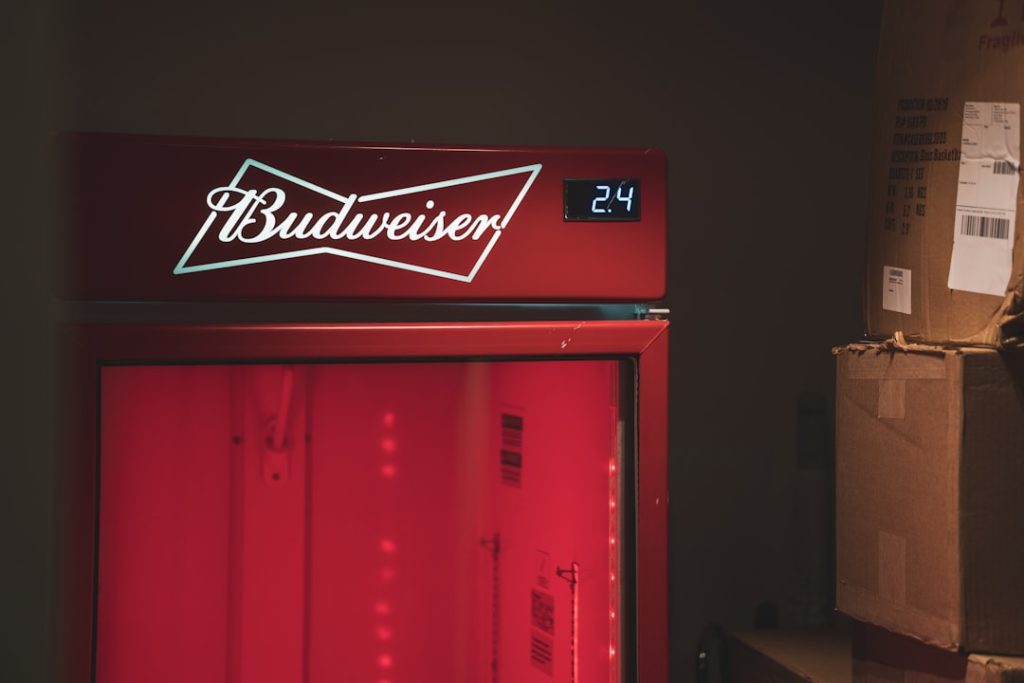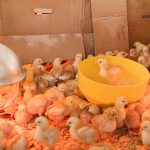Salmonella is a bacterial pathogen that can cause foodborne illness in humans. It is frequently associated with poultry, particularly chickens and their eggs. The bacteria can reside in the intestinal tracts of healthy chickens and may contaminate eggs prior to laying.
Human consumption of contaminated eggs or poultry products can lead to illness characterized by symptoms including diarrhea, fever, and abdominal cramps. In severe cases, particularly among young children, the elderly, and immunocompromised individuals, Salmonella infections can be life-threatening. Transmission of Salmonella to humans can occur through direct contact with infected chickens or their feces, as well as through ingestion of contaminated eggs or poultry products.
Chicken owners should be cognizant of the risks associated with Salmonella and implement preventive measures. These include maintaining proper hygiene and sanitation practices, regularly cleaning coops, monitoring flock health, and adhering to proper egg handling and storage protocols. By understanding Salmonella’s characteristics and implementing proactive measures, chicken owners can mitigate risks to both their flocks and themselves.
Table of Contents
- 1 Proper Hygiene and Sanitation
- 2 Regular Cleaning of the Coop
- 3 Monitoring the Health of Your Chickens
- 4 Proper Egg Handling and Storage
- 5 Cooking Eggs Thoroughly
- 6 Consulting a Veterinarian
- 7 FAQs
- 7.1 What is simnellas and how does it affect chicken eggs?
- 7.2 How can I prevent simnellas contamination in my home chicken eggs?
- 7.3 What are some best practices for keeping home chicken eggs safe from simnellas?
- 7.4 Can I test my home chicken eggs for simnellas contamination?
- 7.5 What are the symptoms of simnellas poisoning from chicken eggs?
Key Takeaways
- Salmonella is a bacteria that can be found in the intestines of chickens and can be transmitted to humans through contaminated eggs and poultry products.
- Proper hygiene and sanitation, such as washing hands after handling chickens and eggs, is crucial in preventing the spread of Salmonella.
- Regular cleaning of the chicken coop, including removing droppings and soiled bedding, can help reduce the risk of Salmonella contamination.
- Monitoring the health of your chickens for signs of illness, such as diarrhea or lethargy, can help prevent the spread of Salmonella within the flock.
- Proper egg handling and storage, such as collecting eggs frequently and refrigerating them promptly, can help reduce the risk of Salmonella contamination.
Proper Hygiene and Sanitation
Personal Hygiene Practices
It is also important to wear gloves when handling chickens or their eggs to minimize the risk of contamination.
Coop Sanitation and Cleaning
Additionally, chicken owners should avoid bringing any food or drink into the coop area to prevent cross-contamination. In terms of coop sanitation, it is essential to regularly clean and disinfect the coop to reduce the risk of Salmonella contamination. This includes removing soiled bedding, droppings, and any leftover feed on a regular basis. Coop surfaces should be cleaned with a disinfectant to kill any bacteria present.
Reducing the Risk of Salmonella Contamination
By maintaining proper hygiene and sanitation practices, chicken owners can significantly reduce the risk of Salmonella contamination in their coop and protect both their flock and themselves from illness.
Regular Cleaning of the Coop

Regular cleaning of the coop is essential for maintaining a healthy environment for chickens and reducing the risk of Salmonella contamination. This includes removing soiled bedding and droppings on a regular basis to prevent the buildup of bacteria. Additionally, coop surfaces should be cleaned and disinfected to kill any harmful pathogens that may be present.
In addition to regular cleaning, it is important to ensure that the coop is well-ventilated to prevent the buildup of moisture, which can create an ideal environment for bacteria to thrive. Proper ventilation can help maintain a dry and clean coop environment, reducing the risk of Salmonella contamination. Furthermore, chicken owners should also pay attention to the cleanliness of feeders and waterers, as these can also become sources of contamination if not properly maintained.
Regular cleaning and disinfection of these items can help prevent the spread of Salmonella within the flock. By implementing regular cleaning practices in the coop, chicken owners can create a healthier environment for their chickens and reduce the risk of Salmonella contamination.
Monitoring the Health of Your Chickens
Regular monitoring of the health of chickens is crucial for detecting any signs of illness or infection, including Salmonella. Chicken owners should be familiar with the normal behavior and appearance of their flock so that they can quickly identify any changes that may indicate a health issue. Signs of Salmonella infection in chickens can include diarrhea, lethargy, decreased egg production, and ruffled feathers.
If any of these symptoms are observed, it is important to isolate the affected bird and seek veterinary care promptly. Additionally, chicken owners should be vigilant about observing any changes in the overall health and behavior of their flock, as early detection and treatment can help prevent the spread of illness within the flock. In addition to visual monitoring, regular health checks by a veterinarian can help ensure that any potential health issues are addressed promptly.
By staying proactive in monitoring the health of their chickens, owners can help prevent the spread of Salmonella and other illnesses within their flock.
Proper Egg Handling and Storage
Proper handling and storage of eggs are essential for preventing Salmonella contamination. When collecting eggs from the coop, it is important to handle them carefully to avoid cracking or damaging the shells, as this can increase the risk of bacterial contamination. Eggs should be collected frequently to prevent them from sitting in the nest boxes for an extended period, which can increase the risk of bacterial growth.
After collection, eggs should be promptly refrigerated at a temperature of 45°F or below to slow down bacterial growth. It is important to store eggs in clean and sanitized containers to prevent cross-contamination with any bacteria that may be present in the coop environment. Furthermore, it is important to use eggs within a reasonable timeframe to ensure their freshness and safety.
Properly handled and stored eggs are less likely to become contaminated with Salmonella, reducing the risk of illness for consumers.
Cooking Eggs Thoroughly

The Importance of Thorough Cooking
Eggs should be cooked until both the yolk and white are firm to kill any bacteria that may be present. This can be achieved by cooking eggs to an internal temperature of 160°F or higher.
Risks of Raw or Undercooked Eggs
Consuming raw or undercooked eggs can increase the risk of Salmonella infection, so it is important to ensure that eggs are fully cooked before consumption. This applies to both home-cooked meals and commercial food preparation, as consuming raw or undercooked eggs in dishes such as homemade mayonnaise, hollandaise sauce, or Caesar salad dressing can also pose a risk.
Reducing the Risk of Salmonella Infection
By cooking eggs thoroughly before consumption, individuals can reduce the risk of Salmonella infection and enjoy their eggs safely.
Consulting a Veterinarian
In cases where Salmonella infection is suspected in chickens or if there are concerns about the health of the flock, it is important to consult a veterinarian promptly. A veterinarian can conduct diagnostic tests to confirm the presence of Salmonella and provide guidance on treatment options. Additionally, veterinarians can offer valuable advice on preventive measures to reduce the risk of Salmonella contamination within the flock.
This may include recommendations for vaccination, biosecurity measures, and other management practices that can help protect chickens from illness. Furthermore, veterinarians can provide guidance on proper sanitation practices, coop management, and overall flock health to help prevent Salmonella contamination. By consulting a veterinarian regularly, chicken owners can ensure that they are taking proactive measures to protect their flock from illness and reduce the risk of Salmonella contamination.
In conclusion, understanding Salmonella and taking proactive measures to prevent its spread is crucial for both chicken owners and consumers. By practicing proper hygiene and sanitation, regular cleaning of the coop, monitoring the health of chickens, handling and storing eggs correctly, cooking eggs thoroughly, and consulting a veterinarian when needed, individuals can help reduce the risk of Salmonella contamination in poultry products and protect both their flock and themselves from illness. By staying informed and implementing preventive measures, chicken owners can create a healthier environment for their flock and enjoy their poultry products safely.
If you’re looking for more information on keeping chickens and ensuring the quality of their eggs, check out this article on The Chicken Coop Country Diner. It provides valuable tips on creating a healthy environment for your chickens and maintaining the quality of their eggs.
FAQs
What is simnellas and how does it affect chicken eggs?
Simnellas, also known as salmonella, is a type of bacteria that can contaminate chicken eggs. It can cause food poisoning in humans if the eggs are consumed raw or undercooked.
How can I prevent simnellas contamination in my home chicken eggs?
To prevent simnellas contamination in home chicken eggs, it is important to practice good hygiene and egg handling. This includes regularly cleaning the chicken coop, nesting boxes, and egg collection areas. It is also important to promptly refrigerate the eggs after collection and to wash them before use.
What are some best practices for keeping home chicken eggs safe from simnellas?
Some best practices for keeping home chicken eggs safe from simnellas include regularly inspecting the eggs for cracks or damage, promptly refrigerating the eggs after collection, and washing the eggs with warm, soapy water before use. It is also important to cook the eggs thoroughly before consuming them.
Can I test my home chicken eggs for simnellas contamination?
Yes, there are testing kits available that can be used to test for simnellas contamination in home chicken eggs. These kits can be purchased online or from agricultural supply stores.
What are the symptoms of simnellas poisoning from chicken eggs?
The symptoms of simnellas poisoning from chicken eggs can include diarrhea, abdominal cramps, fever, and vomiting. In severe cases, it can lead to dehydration and hospitalization. If you suspect that you have consumed contaminated eggs, it is important to seek medical attention.
Meet Walter, the feathered-friend fanatic of Florida! Nestled in the sunshine state, Walter struts through life with his feathered companions, clucking his way to happiness. With a coop that’s fancier than a five-star hotel, he’s the Don Juan of the chicken world. When he’s not teaching his hens to do the cha-cha, you’ll find him in a heated debate with his prized rooster, Sir Clucks-a-Lot. Walter’s poultry passion is no yolk; he’s the sunny-side-up guy you never knew you needed in your flock of friends!







